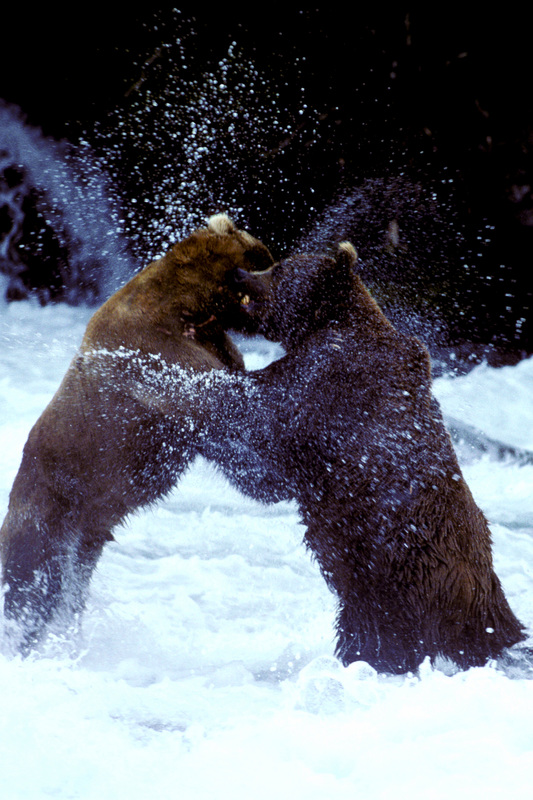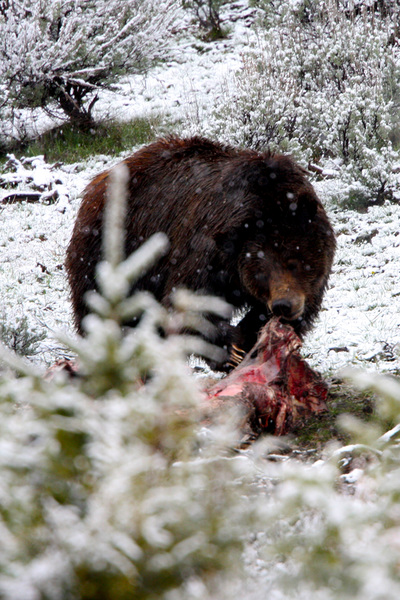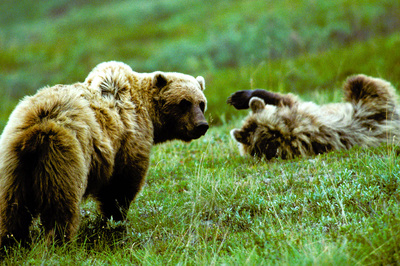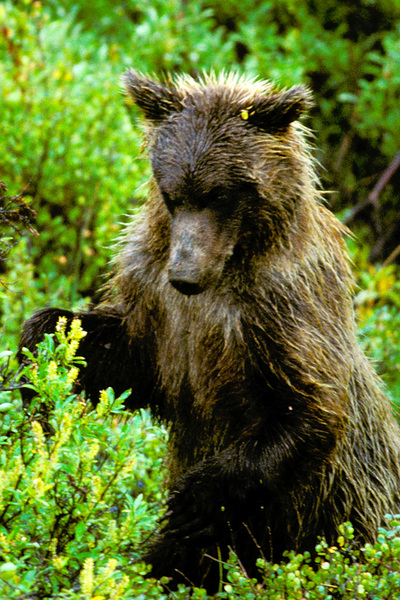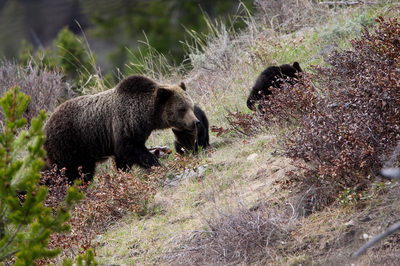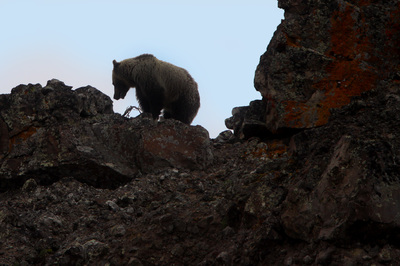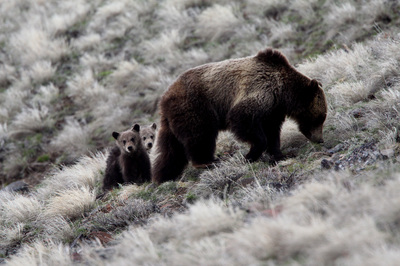Grizzly Bears
|
A few years ago I wrote a story about brown bears for this magazine, but a recent trip out west impressed upon me the need to do a follow-up story on grizzly bears. Although brown bears and grizzly bears are the same species (Ursus arctos) there are some rather significant differences between the two. “Brown bear” is actually the name given to coastal grizzly bears. These bears are bigger bears and are often found along salmon streams. Indeed they are bigger because their main source of food is salmon. A smaller version of this species exists inland. Sometimes it too may be brown, but often it sports the classic grizzled coat. This is the bear known to the public as the grizzly. I’m a bear watcher. I’ve enjoyed the hours I’ve spent with North America’s bears (grizzly/brown, black and polar bears) and this has become easier to do this in recent years. The number of grizzly bears is growing. They are expanding their range thanks to good management practices and this fact increases the chances of coming across one if you fish western mountain streams and rivers. While salmon-eating brown bears are generally docile and well fed, the same cannot be assumed for grizzly bears. They are generally hungry. Unlike black bears, which are creatures of the forest, the grizzly is at home on the open plains. Where a black bear retreats to the forest cover, a grizzly is much more likely to stand its ground and even charge. I should stress that I’ve experienced little aggression from grizzly bears but I am always aware of the potential they have for mayhem. Even though they don’t view people as prey, it’s a wise idea to give any bear, particularly the grizzly, plenty of room. In fact, recent research shows that the grizzly bear’s food preferences are highly variable. A Yellowstone grizzly’s diet may be made up of over 60% meat thanks to the herds of elk and bison living in the ecosystem while a Glacier Park bear may feed almost exclusively on plants. The one trait that all grizzlies share is that they are almost always looking for their next meal. It goes without saying that keeping food away from bears (any species) is a must. Whether you are fishing in the back-country or in your favorite drive-to fishing spot, take precautions to avoid the scent of food reaching bears. There are wide array of products available to store food in so that bears do not smell it. Everywhere you go in grizzly country there are lists of do’s and don’ts. Pay attention to them and you reduce the opportunity for trouble to occur. Know how to tell a grizzly from a black bear (the shoulder hump of the grizzly and black bear’s sloping hind end are good diagnostics) and take appropriate action if one appears. Hunters are more likely to get in trouble with grizzly bears as some of them have apparently learned to associate the hunting season with a new food source (gut piles). If you are fishing in grizzly country during the hunting season, avoid going near recent kill sites if possible. All that said, grizzly bear watching can be a safe and entertaining pastime if done carefully and from a safe distance with a good pair of binoculars, a spotting scope or a long camera lens. Note: A version of this article first appeared in Bob Izumi's Real Fishing Magazine in 2008. It is used with the permission of editor. |
|
All images and text are copyright © 2016 J.D. Taylor Senses of Wildness Inc. These images may not be used in any form without permission. All rights reserved.
